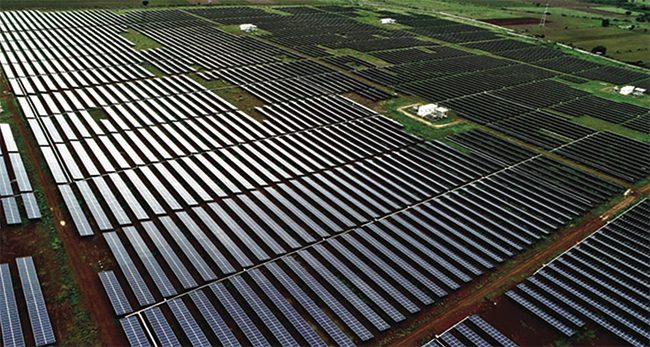Net-Zero Goals Require Decarbonization Across the Value Chain
If reaching net zero was easy, we would have done it already. The reality is that removing the global economy’s reliance on carbon is incredibly complex, and there’s no single “magic fix” that will propel us into a sustainable future. Instead, we must address the problem at every stage of the industrial value chain.
Only a combination of approaches applied across the value chain will help industries, including utilities and power generators, reach ambitious sustainability targets. The most effective solutions will be those that continue to create commercial value for the industries and businesses that employ them, while naturally driving the transition toward a decarbonized economy. This is especially true of industries where producing significant carbon emissions is common, such as electricity generation, manufacturing, transportation, agriculture, and heating.
Furthermore, even the most dedicated steps in one area will be ineffective unless paired with similar efforts up and down the chain. For example, electrification—the move away from fossil fuels to produce energy—can go a lot further in reducing emissions when partnered with low- or zero-carbon electricity generation and energy-efficient processes.
Shifting the Grid to Renewables
Electricity generation is at the root of almost every modern industrial value chain, yet conventional approaches based on fossil fuels are associated with high carbon emissions. For electrification efforts down the chain to be truly sustainable, they must be powered by electricity from renewable sources.
 |
|
1. Solar power is among the renewable energy resources that utilities and power generators are using to decarbonize their electricity production. Courtesy: SB Energy |
Renewable sources of power, such as onshore and offshore wind, solar (Figure 1), and hydroelectric, are already responsible for a significant and constantly increasing proportion of electricity generation. However, in almost every country, the grid is supported by more predictable, consistent, and high-carbon power sources, such as burning coal or natural gas. A challenge for decarbonization remains ensuring a steady supply of baseload power, while at the same time addressing the issue of emissions reduction.
Carbon-intensive generation already are being phased out, and more will need to be phased out in the decades ahead. But as noted, this presents a challenge for the grid. Renewable power sources are generally more variable and weather-dependent than traditional sources, and this can result in grid instability. Technologies such as battery storage and synchronous condensers can help maintain the balance, but grids are complex systems, and applying these technologies correctly is not always simple.
To develop a better understanding of real-world renewable power grid stability, especially in an era of decarbonization, ABB has recently partnered with the Fraunhofer Institute for Wind Energy Systems (IWES) in Germany to start building the world’s largest mobile grid simulator. This simulator will begin operating in 2023, and enable the testing of grid stability under different conditions. Efforts like this will be required worldwide to better understand the consequences of using more energy from renewable resources, and to overcome any associated issues with the decarbonization of the grid.
Effective Electrification
Many types of carbon-intensive equipment can—relatively easily—be substituted with electrical alternatives. In some cases, electrical solutions can even be direct drop-in replacements.
For example, the mining industry is extremely energy-intensive, and a large percentage of the emissions are associated with transportation. In India, one of the largest private steel companies used diesel-powered trucks to transport iron ore from the mine, with vehicles making nearly 3,000 trips back and forth each year. This was inefficient in terms of both energy use and employee time, so the company sought a better option.
The company replaced its trucks with a 24-kilometer-long electric conveyor system. Since it is powered by electricity rather than diesel fuel, this solution has the potential to reduce emissions significantly, as well as providing numerous other benefits. Unlike trucks, this system isn’t prone to road slippage or vehicle breakdowns, and it significantly cuts the inbound logistics costs. The conveyor is also significantly safer than driving ore to the site—there have been zero road accidents since the conveyor system was put in place.
Similarly, the Danish port city of Esbjerg turned to electrification for a sustainable solution for its heating needs. While burning carbon may be an efficient way to heat homes and businesses, it is a major source of emissions. As a sustainable alternative, ABB recently delivered the integrated electrical infrastructure for a seawater heat pump that uses a combination of electric motors, drives, and other technology to provide clean heating. When completed, the system will provide “green heat” to more than 100,000 inhabitants of Esbjerg, significantly reducing the city’s emissions. It’s a model already in use by utilities and power companies seeking to decarbonize their operations.
In the India and Denmark examples, electrification provided motivation to address the problem with a clean sheet design, which is significantly better than the prior solution in terms of convenience and safety, as well as efficiency and sustainability. Electric solutions in many cases are also more reliable and easier to maintain than older alternatives.
Efficiency and Sustainability
Simply adopting electrification to address decarbonization isn’t enough: the solutions must also be efficient. The International Energy Agency (IEA) describes efficiency as the “first fuel” in the world’s journey to net zero, noting that converting existing machinery to run more efficiently is an effective way to cut emissions without sacrificing economic viability.
 |
|
2. Industries of all types use electric motors to drive various pieces of equipment. Wider use of highly efficient, modern electric motors can reduce emissions when more polluting power sources are displaced. Source: Shutterstock |
Electric motors are an excellent example of the potential for technological improvements to drive efficiency (Figure 2). These motors are present in virtually every industry, and certainly in power generation, powering compressors, fans, conveyors, pumps, and other machinery. They are so common that industrial electric motors alone are responsible for 45% of global energy consumption—much of it from carbon-intensive sources.
Many of the millions of older motors running right now around the world are less efficient than the latest designs, and wasting energy as a result. Simply by dropping in modern motors combined with variable-speed drives, or VSDs, which enable a motor to precisely match its speed to the speed required for the task it is completing, industries (and some power plants) could cut their power use by as much as a quarter.
This is partly due to the counterintuitive relationship between speed and power consumption: a motor running at half speed consumes only one-eighth of the energy used by one running at full speed. For this reason, even small reductions in speed can yield significant power savings. Despite this, only about 23% of the world’s industrial motors are currently paired with a VSD, leaving them running at full speed constantly and consuming more energy than is necessary.
 |
|
3. All manner of industrial facilities, from thermal power plants to refineries and more, are studying ways to improve efficiency and thereby decarbonize their operations. Courtesy: ABB |
In addition to efficiency improvements in the machinery itself, data and digital services can enable entire facilities (Figure 3) to operate more efficiently. Sensors on modern equipment can detect deviations in temperature, vibration, and countless other variables to identify areas where electricity is going to waste, and operators can then address these issues. These improvements have made a marked difference in operations and maintenance at power generation stations, among other facilities.
For example, decision-makers at a paper mill in Munksund, Sweden, were looking to improve the facility’s efficiency, but with 2,400 motors onsite, it was difficult to know which to replace. The company is committed to efficient energy use, so many motors were already up to high efficiency standards.
To identify the motors that would benefit most from replacement with a modern motor-drive package, the facility contracted ABB to carry out a comprehensive condition monitoring project. Engineers securely collected data on temperature, operational patterns, stress levels, and other variables to identify long-term trends in performance. With these insights, the engineers identified motors and drives in need of replacement, recommended specific models to replace them with, and calculated exactly how much energy they would save each year.
Future Applications
There are many steps that can be taken immediately, using today’s technology, to concretely address carbon emissions. However, given that net-zero is a goal in the future, it’s also worth considering the role that emerging technologies can play.
For example, hydrogen is just starting to see serious adoption as an alternative, zero-carbon fuel. Hydrogen is ideally suited to applications where electrification technology is not yet capable of meeting specific requirements, such as aviation. The keys to success in building a hydrogen economy will be managing production, distribution, and utilization efficiently through digitalized infrastructure.
Another technology that may play a major role in decarbonization is carbon capture and storage technology. While the field has not yet reached maturity, it continues to advance at an impressive pace. Recent advances in enhanced hydrocarbon recovery and direct-air capture of carbon dioxide, for instance, suggest that the technology is within reach. Once captured, carbon can be safely sequestered or used productively, such as in the production of alternative fuels and building materials. Power generators have the opportunity to be at the forefront of this movement.
Carbon is entwined tightly with almost every type of industrial process in every country around the world. Untangling this connection and replacing carbon with cleaner alternatives is a challenge, but utilities and power generators already have proven they’re up to the task. Advances in technology mean that maintaining commercial value is not an obstacle to reaching net zero.
—Chris Poynter is president of ABB System Drives.